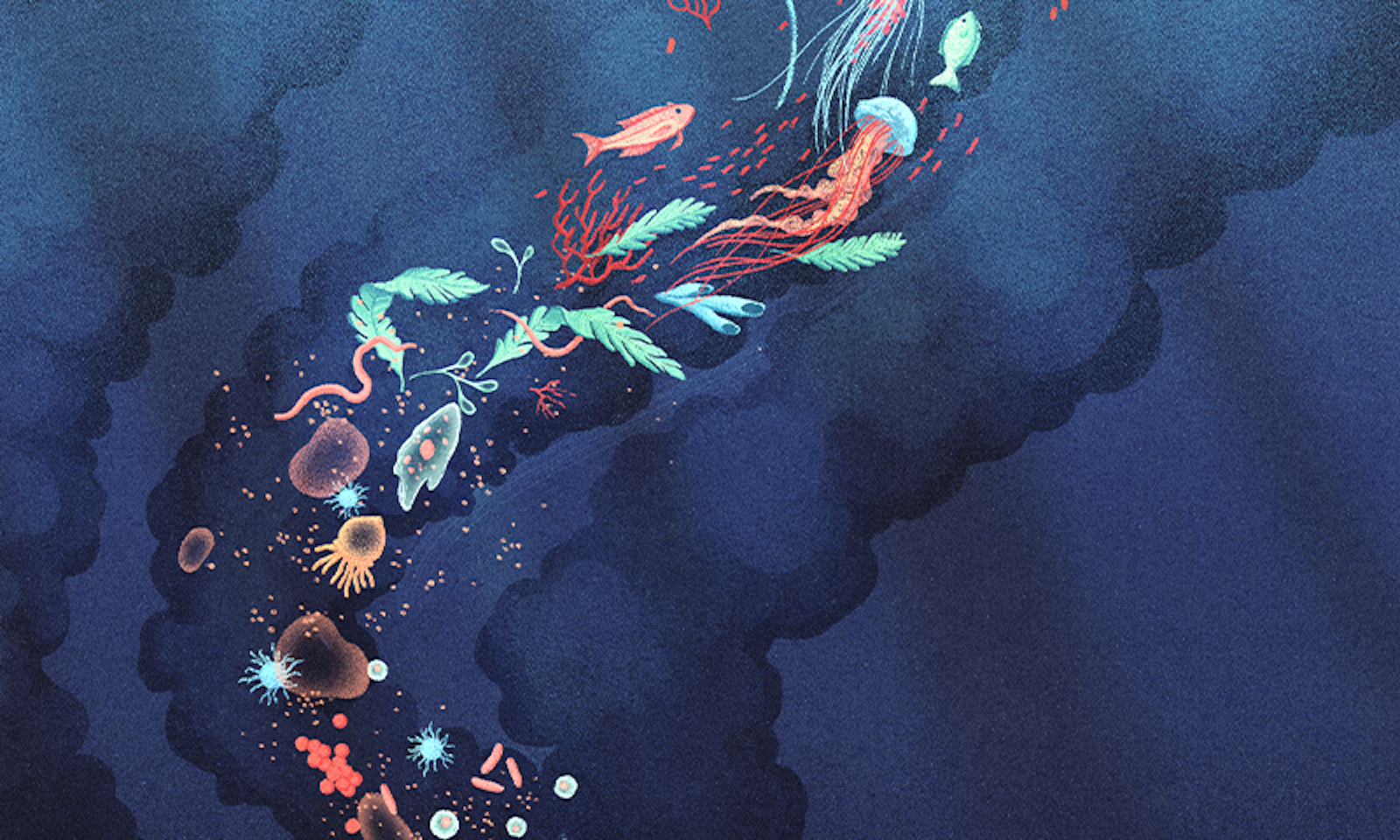We just love opening the Nautilus hatch to readers, welcoming you to join us as we travel the byways of scientific discovery. When we look back at the stories we’ve told this year, we’re thrilled at the range of their insights. The stories venture from the bottom of the sea to as far as a telescope can see, shifting perspectives on the mundane and magnificent. Below is the Nautilus journey of 2022, told through some of our favorite passages.
MIND YOUR MATTER
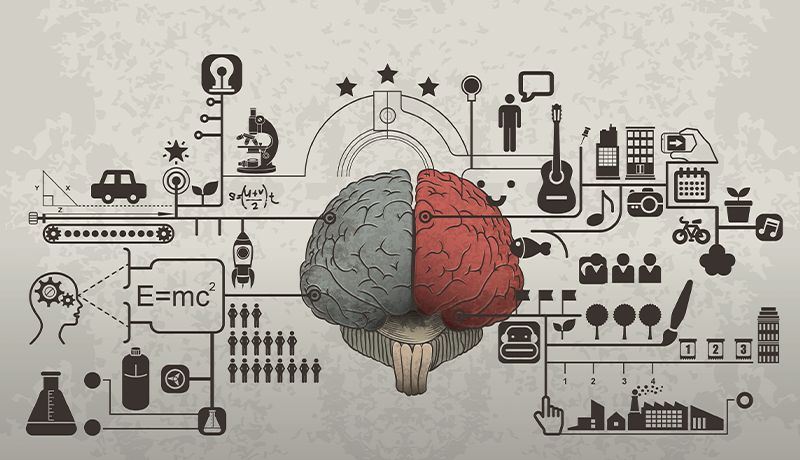
The evolutionary history of the human brain is written in the genome, but the uniqueness of each mind is written in its unique and ever-changing synaptic circuitry. It seems that what makes us all human is also what makes us all different.

Memories, things that minds do, like remember things and talk about them, depend on brain activity. No brain activity, no mental process. If somebody with no brain activity were able to experience something and remember it later, then pretty much everything we know about the brain, about science, about physics is wrong.

This notion that there are supernatural beings that are ethereal and disembodied—ghosts—is something that is seen a lot across cultures, including in the Judeo-Christian tradition. But maybe it’s not that our beliefs come from religion, but rather it’s religion that arises from our beliefs.

Scientists have learned that, generally speaking, anesthetic drugs render people unconscious by altering how parts of the brain communicate. But they still don’t fully understand why.

Like an ocean wave, your “self” is an endlessly fluctuating process. Memories trail along from the past, and those memories impact your experience in this moment, but each moment of your experience still depends on the exact state of your brain at that particular point in time. We’re always residing in the here and now, yet each moment is instantaneously swept away by a ghostly breeze.

What philosophers and theologians have described as a soul is very much captured by the continuous feeling of existence. Feelings such as hunger or thirst are occasional, but if we pause for a moment and observe carefully what goes on in our minds, we realize that “a feeling of just being” is present continuously.

Because our brain never stops making predictions, we tend to look for patterns and statistical regularities everywhere around us. But our predictive brain does not like unpredictability. This is where ritual comes in. The repetitive action patterns found in ritual function as cognitive gadgets that help us cope with stress.

We are very fortunate to be able to mentally travel in time, and it is an ability worth using. Future-thinking is related to adaptative behaviors such as helping others. So take a few minutes each week or day to imagine our future.

ALL CREATURES GREAT AND SMART

A favorite cartoon of my engineering friends shows two beavers looking up at a vast hydroelectric dam. One beaver says to the other, “I didn’t actually build it, but it’s based on my idea.”

The ability to perceive the world in moral terms isn’t unique to human beings but shared by other members of the animal kingdom. There is nothing inherently outlandish or unscientific in the suggestion that a dog can experience certain kinds of treatment as unfair.

The dominant females in a group of mongooses all give birth on the same day—indeed, on the very same morning. It happens on different days in different groups, but within groups the synchrony is astonishing.

Some years ago, a rogue band of giraffologists stuck their own necks out and began proposing a kind of biological heresy: that giraffes got their long necks not merely to better fill their bellies, but all the better to bash each other with, my dear.

Octopuses are a confederation of intelligent parts, which means their awareness, as well as their thinking, occurs in ways which are radically different to our own.

Blue whales are not only the world’s largest animals; they are the world’s loudest, whose 180-decibel songs—as loud as a jet plane—can be heard 500 miles away by properly-attuned ears. But now their voices have inexplicably shifted from bass to basso profundo, Elvis to Barry White. And that shift is consistent around the world—even though the local anthems are not.

Is language really a human specialty? All animals communicate. Our closest relative, the chimp, makes eye contact with another who is approaching and then flings his hand abruptly to the side in a gesture that means “Move away!”

Evolution has furnished the male barnacle with an extravagantly long penis. It’s several times longer than his body. He can cruise the neighborhood for sex without ever having to move and inseminate whoever he comes across, and also make the best of a situation where if he can’t find anyone to fertilize, he can just come home and fertilize himself.

The monarchy metaphor—the queen bee rules the hive—is misleading. The hive’s elegant division of labor is controlled by its thousands of workers, who make decisions at a local level that, when acted out, affect the entire colony. Everyone is working toward the collective good. The unit of importance for bees is its society, not the individual.

More than 300 different animal species engage in a diverse array of behaviors that fall under the umbrella of homosexuality. Everything from same-sex sex, affection, pair bonds, and parenting. The literature on animal homosexuality shows that same-sex sexual behavior in a given species does not negatively impact a species’ reproductive rates.

THE WRITER’S VOICE
That palace of ideas, with its numbers and symbols and geometric shapes, soon became a playground as well as a refuge, a place where all my “why” questions had answers and where things made sense in a way that didn’t apply to the rest of my life. I was later drawn to physics for its promise that the palace was real, and that hidden somewhere inside it was one grand equation that, like the God I’d dismissed for being too magical, could ultimately explain everything.

It would be a lie to omit the unease I felt emanating from that scarp in his memory. It was like a sinkhole that suddenly pockmarks the ground; we rope it off with caution tape and cones, trying to reassure ourselves that the dangers have been safely delineated.

I barely got waist deep before I turned back to the shore and flung myself into the snow. Ashamed of myself for, almost a year later, being completely unable to move past my brother’s death. Even when I wasn’t in the lake, I was in the lake. I was always in the lake. Frozen.

My humanities colleagues were fascinated. Was there a fragment of consciousness locked inside this brain tissue speck, a whisper from the genes of the donor?

I found that Schrödinger, Heisenberg, and the rest sounded less and less like physicists and more and more like therapists. These were useful lessons that enriched and informed my daily life: Through a quantum lens, I found happiness, contentment, satisfaction, and a better sense of my own humanity.

FAR OUT
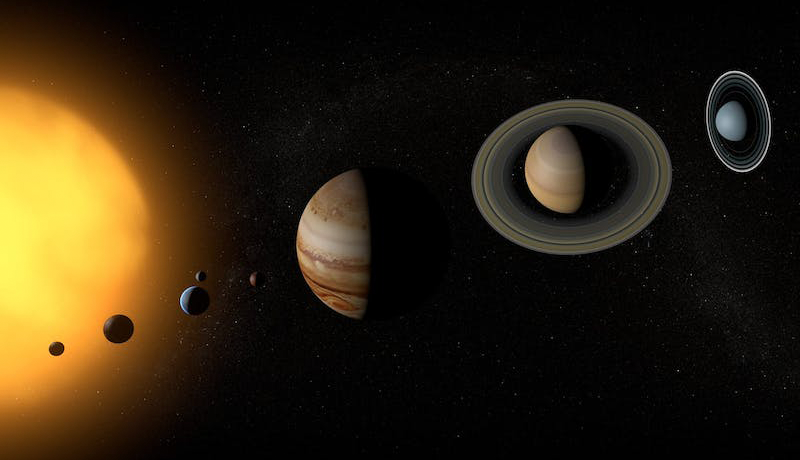
Our solar system is on its way out. Slowly. Over the next several billion years, a series of unfortunate events will take place, spanning from the not-so-great to the truly tragic. Afterward, our solar system will be gone: All of the planets will be lost and the sun will be a solitary white dwarf.

Just like our parental admonition to never talk to strangers, we should think carefully about talking to extraterrestrial species when we can’t talk to them in any temporally fixed way or know how our future selves will deal with this. Perhaps the real risk of messaging extraterrestrials is that no one will ever get to have the conversation they’d like.

We have overwhelmingly strong evidence that the universe expands, and we are confident about its history back to about the time of the electroweak phase transition, which is what the Large Hadron Collider probes. We have to date zero evidence for the beginning of the universe, whether it was a Big Bang Event or something else.

MR. DARWIN’S GENIUS
We, like every other species, are the culmination of a series of partial replacements, the deaths and births of individuals in an ever-shifting population, with a continuity back in time and forward, connecting all living things together.

The brains of modern humans were selected for their ability to learn and adapt to changing environments.

If science, and evolutionary science, have revolutionized the way we see and act on the world, then we can look forward to further improvements in the near future. This leads to a form of hope and optimism, even in the darkest of times, that is part of E.O. Wilson’s legacy.

One day, a question from a middle schooler, submitted to a contest looking for fresh ideas, confounded all the world’s experts: “What about a caterpillar when it turns into a butterfly? When it is liquid goo during its metamorphosis, is it butterfly or caterpillar or what?”

Bioluminescence has evolved independently at least 94 times, in bacteria, mushrooms, jellyfish, fireflies, shrimp, octopuses, brittle stars, and more. The tree of life is spangled with twinkle lights. One conspicuously dark branch: our own.

I can see how convinced he is that this story, despite its chemical complexity, provides a coherent picture of the way life gained a foothold on the planet. And his hypothesis “makes a terrifying prediction,” he says. “All of this biochemistry is just going to spontaneously happen. But what a beautiful prediction!”

We get this hit of joy, of euphoria, of reward when we interact with the people important to our survival. It’s biological bribery. But that visceral need can be used to make us do things we don’t necessarily want to do. That’s the cost of love. It can be used to abuse or coerce us. That’s what separates us from the animals. Animals don’t use love to manipulate others. We do.

In mythical form, trees appear in creation stories, present at time’s beginning. In graphical form, they represent seasons, cycles, genealogies, algorithms, and systems of knowledge. This is why Darwin imagined millions of years of evolutionary history as a wide-spreading Tree of Life.

HAPPINESS OF SCIENCE
The beauty of science and its power to redeem is not just about producing safe and effective vaccines or sending telescopes into space to unravel the mysteries of the universe and our origins. Science teaches us to face reality—which is more extraordinary than is dreamed of in pseudoscience philosophies—and see that we are inextricably connected to others, for their health and ours.

As an anthropologist, I am intimately familiar with the joy of learning about humanity. I see that same curiosity in others, eager to learn more about the human story and their role in it. We share this in common, along with the thousands of other quirks and nuances that make us human. Scientists and the public have a symbiotic relationship: The public supports our work, through grants, tuition, and their attention, and in return, we owe them the spoils of our research, helping to guide their thinking on what it means to be human. And sometimes that means setting the record straight on Twitter.

“If we could export some of the ideas of science, when science is done well, into everyday life, I think we would all be happier, more empowered.”

DON’T LOOK BACK
The surgeon’s role fell mostly to uneducated barbers who had been frequenting monasteries since the late 11th century AD, when beards were banned. The two fields became more intertwined as barbers took on more surgical roles, like performing bloodletting and amputating digits. Patients’ pain was often understood as having a biologically protective role, or even as a religious blessing.

After the “witch” trials in Europe, men started getting involved with childbirth, and they started using a substance called ergot, which is a fungus of rye that midwives had always used to stop bleeding. Male doctors started using it to hurry labor—with absolutely disastrous results. So European women came into childbirth scared out of their heads. They were terrified, with good reason.

BORN TO CALCULATE
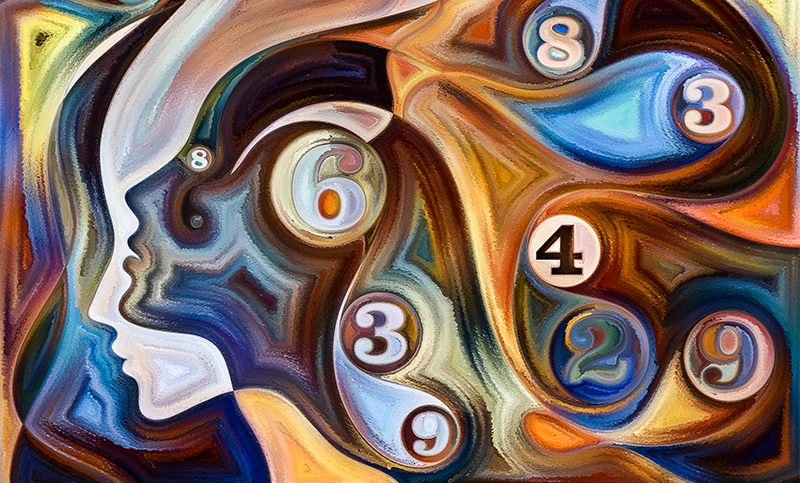
Humans are born with an inherent sense of numbers. We are primed to do basic math, but culture gets in the way. This ability to estimate and understand quantity may have evolved as a basic survival skill. It could have helped our ancestors and members of other species quickly assess whether they were outnumbered by predators, or to forage in places with more available food relative to others.

Students who might complain to their math teacher that there’s no point in anyone learning how to use imaginary numbers would have to put down their phone, turn off their music, and pull the wires out of their broadband router.

Einstein himself didn’t know about the Big Bang, but his equation did. And that’s just endlessly amazing. That’s why physics is the most amazing science: These little ideas we come up with in our offices correctly describe things happening billions of years ago and billions of light-years away. And that’s only possible because of the equations.

THIS AILING EARTH
In science, the ultimate goal is to alleviate human suffering. But it also includes understanding nature. But in the middle of understanding nature, we very quickly make a crossing into tampering with nature.

Scientists have documented plastic particles in about 40 percent of the human diet including beer, honey, salt, and seafood. People may be eating as much as a credit card’s worth of plastic each week—or more, because scientists still haven’t figured out how to reliably determine microplastic levels in meat, vegetables, grains, or packaged foods, which means we still don’t know how much plastic we actually eat.

We humans tend to be overzealous morticians. Rather than letting stranded animals fulfill their ancient roles, we hastily dispose of their remains, depriving coastal ecosystems of nature’s greatest windfall.

With the pesticides, insecticides, and other toxic chemicals we use to exterminate unwanted creatures that either destroy our crops or otherwise annoy us, we kill off the weaklings. The survivors are the super-creatures with super appetites. They often eat right on, into the forests.

The brackish shallows of the Guayas River estuary make perfect breeding grounds for industrial shrimp farming. The booming industry threatens the River estuary, along with the livelihood and culture of local fishermen. As mangroves are logged to make way for shrimp farms, the estuary’s natural bulwark against climate change is falling.

Nearly 11 billion crabs had, effectively, disappeared. The cause remained an open case, albeit with a prime suspect: climate change. But climate doesn’t tell the whole story. Fishing impacts have been largely absent from the discussion.

ARTIFICIAL, YES. INTELLIGENT?
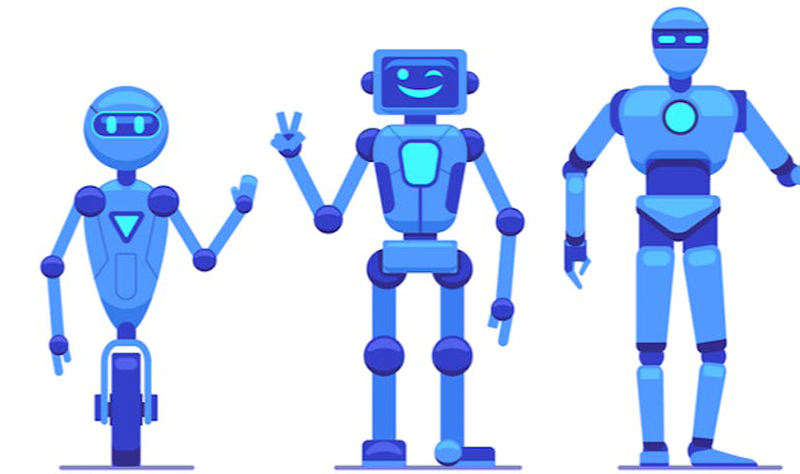
Much of what large pre-trained AI models do is a form of artificial mimicry. Rather than stochastic parrots, we might call them stochastic chameleons. Parrots repeat canned phrases; chameleons seamlessly blend in new environments. They can be prone to mimicking the worst aspects of humanity, including racist, sexist, and hateful outputs. They have no intrinsic regard for truth or falsity, making them excellent bullshitters.

In truth, we are still a long way from machines that can genuinely understand human language, and nowhere near the ordinary day-to-day intelligence of Rosey the Robot, a science-fiction housekeeper that could not only interpret a wide variety of human requests but safely act on them in real time. In time we will see that deep learning was only a tiny part of what we need to build if we’re ever going to get trustworthy AI.

I’m a materialist. We humans are made of physical stuff and we apparently are conscious, and so are many animals. That’s why I think we should be able to make artificially conscious machines. I’d like to think that the work we’re doing on simulation-based internal models in robots and in artificial theory of mind is a step in the direction of machine consciousness.

ART IS REVOLUTIONARY
The colonialist impulse of neuroscientists is to explain art because they’ve already explained what a human being is. We’re more likely to learn what it is to be a human being by trying to understand art better. We’re more likely to frame plausible biological conceptions of human beings by trying to understand art. Art is revolutionary. It’s the seed. It’s where humans break the molds, which we have created for ourselves.

I sat silently for two minutes and thought about painful, anxiety-inducing events in my life. My heart-rate variability tanked and my breath was all over the place. Then I read Robert Frost’s “Stopping by Woods on a Snowy Evening” silently to myself. My indicators rallied and even surged above my baseline levels. The experience offered new insight into Frost’s remark from almost a century ago that poetry “begins in delight and ends in wisdom.”

WE COULDN’T THINK OF A CATEGORY FOR THIS ONE

Your weight comes from the Earth’s gravity pulling you down. The Earth’s gravity comes from its mass. Less mass should mean less gravity. Remove mass from the Earth, and you’ll lose weight. You decide to give it a try. Your project ended up requiring you do an awful lot of work. Removing the Earth’s surface required 5 x 1028 calories of energy, which is more calories than would be burned if the entire human population started doing intense workouts 24 hours a day from now until when the sun burned out and its remnant cooled to room temperature.

AND FINALLY …
People have lost their capacity for experiencing the wonder of not being able to understand something, of not being able to explain things that are mysterious. For me, the experience of wonder leads us to change. It enables us to expand our imagination. It leads us to a space of creativity where we can devise things that can make life sweeter for us now and in the future. ![]()
Lead illustration by Myriam Wares



















